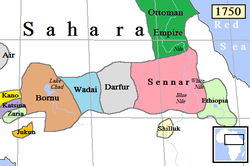A Visit to the Sennari House
So the other day I attended the event where the Arabian Horse Website of the Bibliotheca Alexandrina was launched, thanks to the efforts of Amr Shalabi. It is a nice portal that ambitions to gather the existing archives and documentation pertaining to Arabian horse breeding in Egypt. The event included a number of presentations, including an interesting one about equestrian matters in the Mamluk era by a local university professor, and an comprehensive one about Tahawi Arabian horse breeding by Yasser Ghanem. The Tahawis are supplying some archival materials including copies of hujaj to the Bibliotheca Alexandrina project.
To me the most interesting aspect of that evening was the venue in which it took place. That’s the house (well, the palace) of Ibrahim Katkhuda El Sennari, which is now the Cairo antenna of the Bibliotheca Alexandrina and is located in an Old Cairo street known as Harat Monge (Monge’s street). This Monge is none other than French mathematician Gaspard Monge, the father of differential geometry, who along with a host of other scientists from all disciplines, accompanied Napoleon Bonaparte on his Egypt campaign. The house, known as Beyt El Sennari, was built by Ibrahim Katkhuda El Sennari, a wealthy occultist-turned-politician from the Sudanese sultante of Sennar (1504-1821) in 1794 and served as the first home of the famous Institut d’Egypte which Monge and other scientists founded.


- 3

Now those of you more familiar with the history of the Egyptian Arabian horse breed than in the history of French science will have no doubt noticed that the house and its founder carry the same name as one of the owner of Egyptian Arabian horse foundation stock: Ahmed Bey El Sennari, Lady Anne Blunt’s neighbor at the Sheykh Obeyd Stud and the owner of foundation horses Muniet El Nefous (KDV), Koheylan El Mossen, and Farida El Debbanie (which was the dam of Dahman El Azrak, himself the sire of Negma, Rabdan El Azrak, Tarfa, etc).
This could be a simple coincidence, just like it could be more than that. Any person hailing from the Sultanate of Sennar, which after its conquest by the house of Mohammed Ali was eventually absorbed into Ottoman Vice-kingdom of Egypt in 1821, would carry the name of El Sennari (which simply means “from Sennar”). However, it is indeed probable that Ahmed Bey El Sennari, who died in 1893 (according to Wilfrid Blunt’s diaries, was a grandson of the Ibrahim El Sennari of the Sennari house. Both were apparently wealthy and notable figures of this time. It would be possible to make the connection between the two by learning more about each of them, and by tracing their descendants today.

An Arabic biography of Ibrahim Katkhuda (which means “Governor”) El Sennari from Wikipedia Arabia, heavily quoting Ottoman Egyptian historian Al-Jabarti as a primary source for the bio. I need to look this one up.
http://ar.wikipedia.org/wiki/%D8%A5%D8%A8%D8%B1%D8%A7%D9%87%D9%8A%D9%85_%D9%83%D8%AA%D8%AE%D8%AF%D8%A7_%D8%A7%D9%84%D8%B3%D9%86%D8%A7%D8%B1%D9%8A
Wonderful! And I am -so- excited by the project at the Bibliotheca Alexandrina.
???? ????? ?????? ??? ??? ???? ????? ??? ??? ???? ??? ?? ???????
thanks mr.Edouard, i hope to see you soon